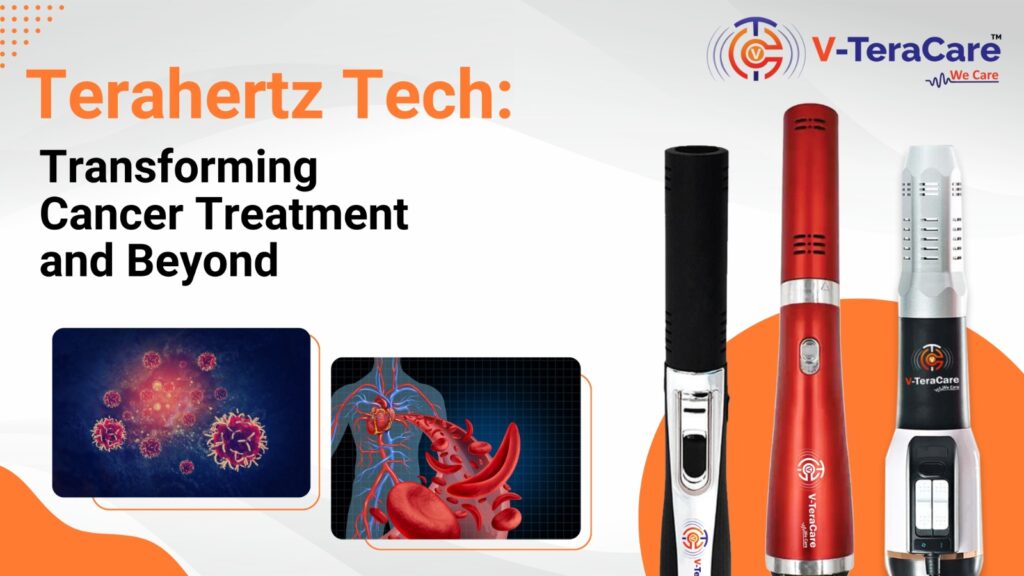Terahertz technology is a new frontier in cancer treatment, offering hope for fighting this disease. With the help of this terahertz wave, scientists can detect even a tiny change in cells, aiding in early cancer diagnosis.
These waves help to awaken the energy of healthy cells and help them fight against cancer cells, offering a precise and effective treatment option. Unlike traditional methods, terahertz therapy is non-invasive and potentially less harmful to patients.
With ongoing research and development, terahertz technology emerges as a powerful tool in the battle against cancer, offering new possibilities for diagnosis and treatment that may improve outcomes and quality of life for patients.
Understanding tumor sizes is crucial in battling cancer. Tumors vary from tiny to large masses, impacting treatment decisions. Small tumors may hide, making detection tough, while larger ones can press on vital organs, causing pain and complications.
Their growth can spread to other body parts, making treatment harder. Doctors use imaging tests like MRI and CT scans to measure tumors and plan treatment.
Challenges arise in treating large tumors, where surgery may be risky, or in tiny ones, where early detection is key. Here’s where the terahertz technology comes to tailor the therapies for better outcomes in the fight against cancer. You can refer to the table as well:
Role of Terahertz Technology in Reducing Tumor Sizes
Terahertz technology offers a promising approach to shrinking tumor sizes. By emitting terahertz waves, doctors can precisely target cancer cells while sparing healthy tissue. These waves penetrate tumors, disrupting their growth and causing them to shrink.
Terahertz waves affect the activity of the refractory tumor making them weak and using terahertz devices, it can cause a significant reduction in tumor size after almost 3 days of use. These terahertz waves work exactly like X-rays and destroy the cells selectively.
Treating Skin Cancer with Terahertz Technology
Skin cancer is one of the most common types of cancer, and its incidence continues to rise globally. Traditional treatments for skin cancer, such as surgery and radiation therapy, can be invasive and may result in scarring or damage to healthy tissues.
Terahertz technology offers a non-invasive and targeted approach to treating skin cancer, making it a game-changer in the field. It Affects the number of EDC genes and treats the non-melanoma cancer cells that grow in our skin. Terahertz waves have the ability to penetrate the skin, allowing for precise targeting of cancer cells within the affected area.
Healing Burn Injuries with Terahertz Technology
Burn injuries can be extremely painful and often result in significant scarring and long-term complications. Terahertz technology has shown promising results in healing burn injuries by promoting tissue regeneration and reducing scar formation.
When terahertz waves are applied to burn wounds, they stimulate the production of collagen, a key protein in wound healing. This leads to faster healing and improved cosmetic outcomes.
Treating cardiovascular patients using terahertz technology
Cardiovascular diseases, such as heart attacks and stroke, are the leading causes of death worldwide. Terahertz technology has emerged as a helpful tool in the treatment of cardiovascular patients. By utilizing terahertz waves, healthcare professionals can accurately assess the condition of blood vessels and identify areas of blockages or abnormalities.
Terahertz waves can penetrate through the skin and provide real-time imaging of blood vessels, allowing for early detection and intervention. Additionally, terahertz technology can be used to deliver targeted therapies to specific areas of the cardiovascular system, improving the efficacy of treatment and reducing the risk of complications.
Improving corneal epithelium of the eye with terahertz technology
The cornea is the transparent outer layer of the eye, and its health is crucial for clear vision. Corneal epithelial defects, such as scratches or ulcers, can cause significant discomfort and vision impairment. Terahertz technology offers a novel approach to improving the corneal epithelium and promoting faster healing.
By applying terahertz waves to corneal epithelial defects, researchers have observed accelerated wound healing and reduced inflammation. Terahertz waves stimulate the migration and proliferation of epithelial cells, leading to the regeneration of healthy tissue.
This innovative treatment approach has the potential to revolutionize the management of corneal epithelial defects and enhance visual outcomes for patients.
The advent of terahertz technology is revolutionizing cancer treatment by offering a non-invasive, targeted approach to reducing tumor sizes. Through the use of terahertz waves, healthcare professionals can selectively target cancer cells while leaving healthy tissues unharmed.
This has the potential to improve treatment outcomes and minimize side effects for patients.


